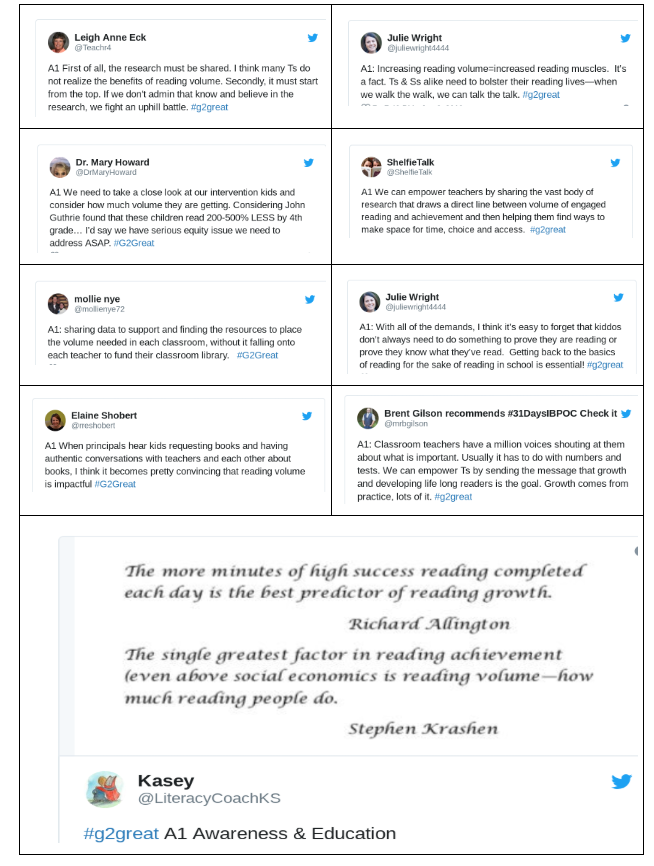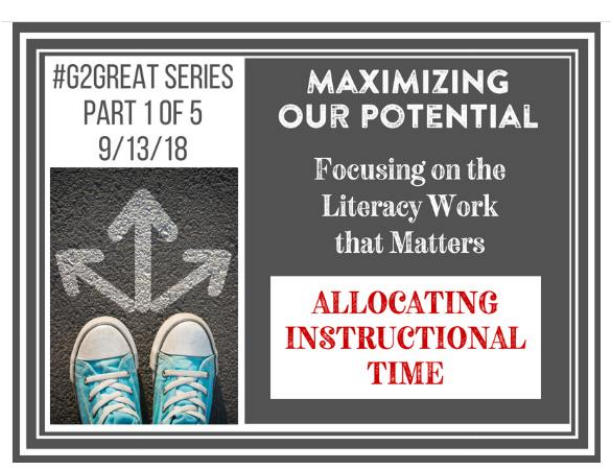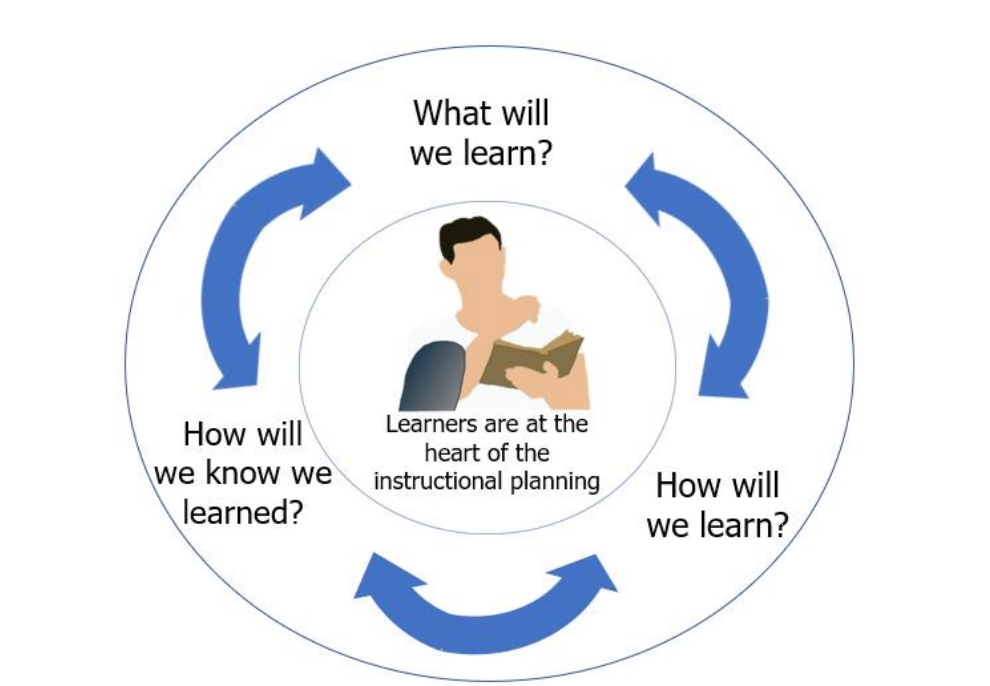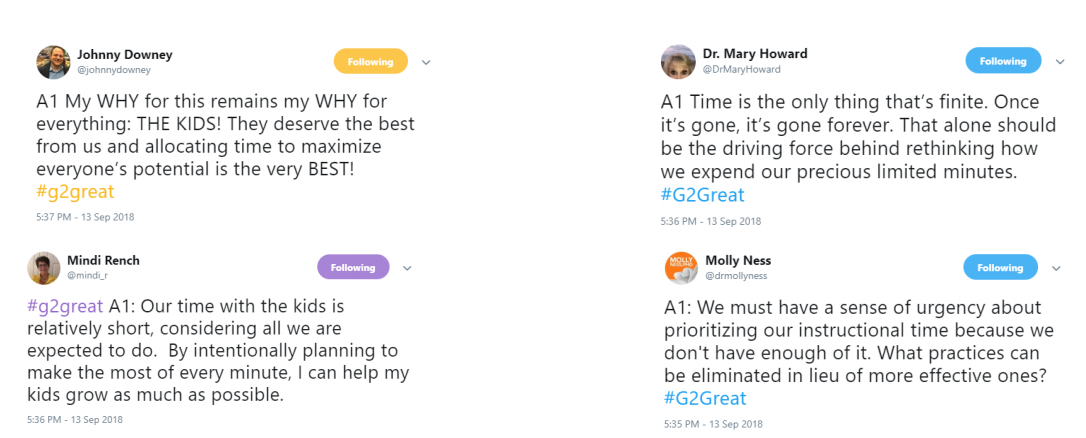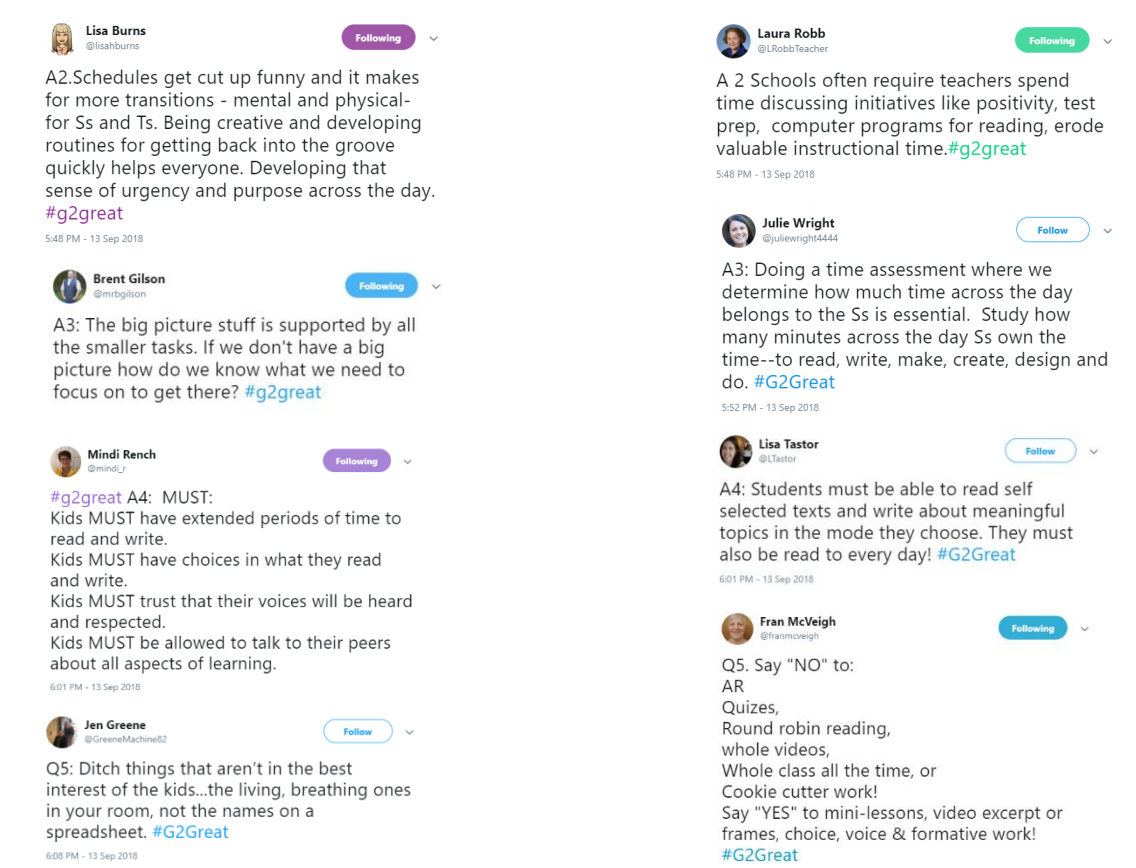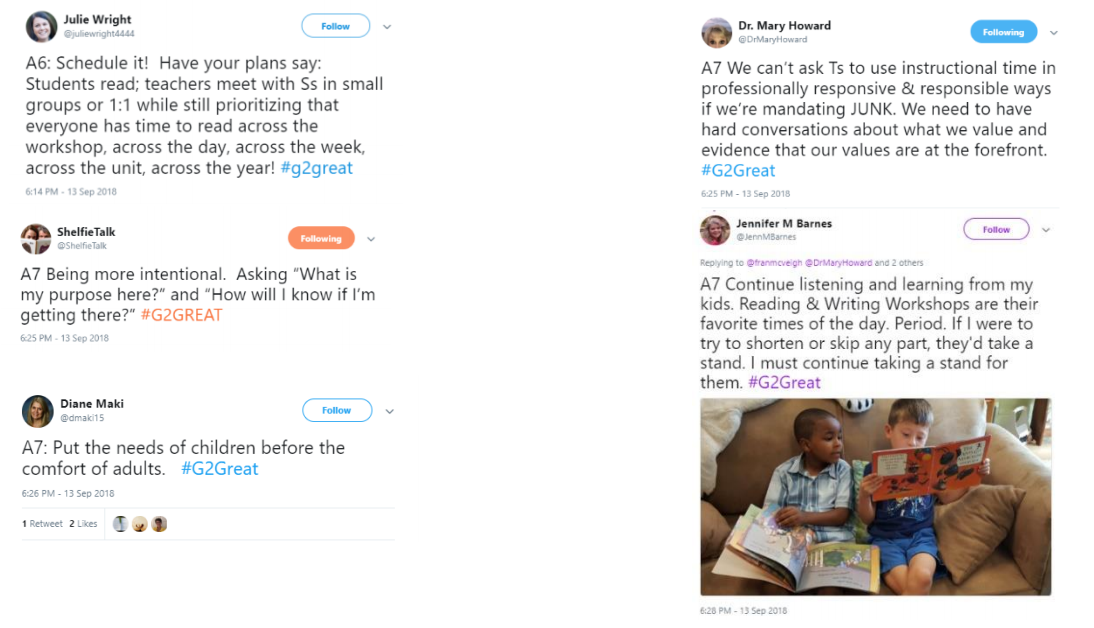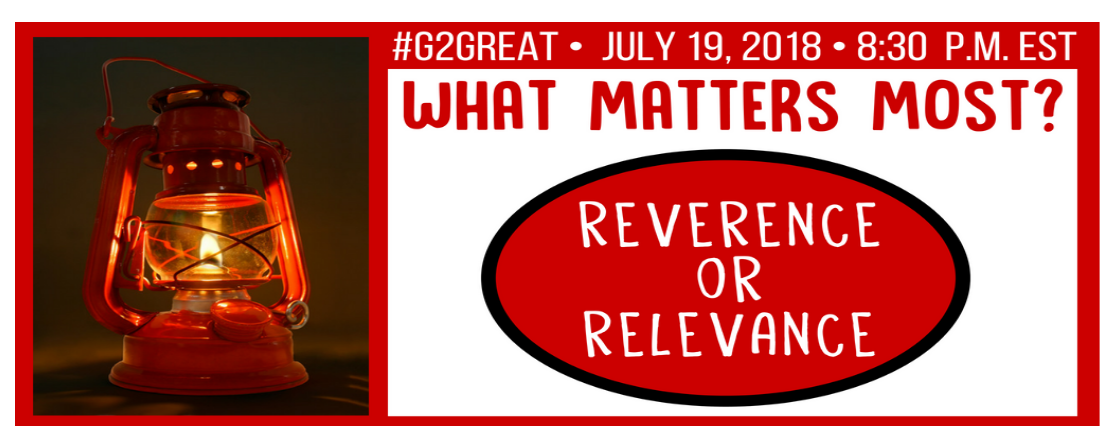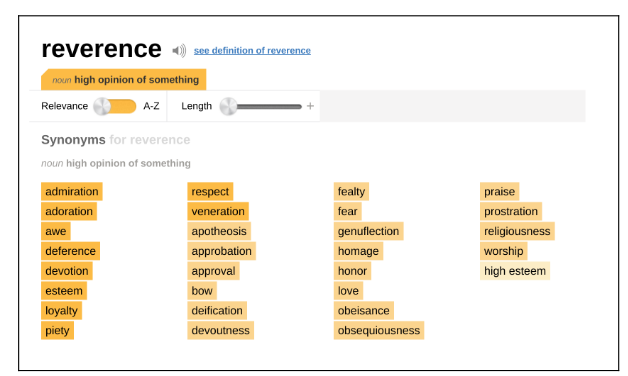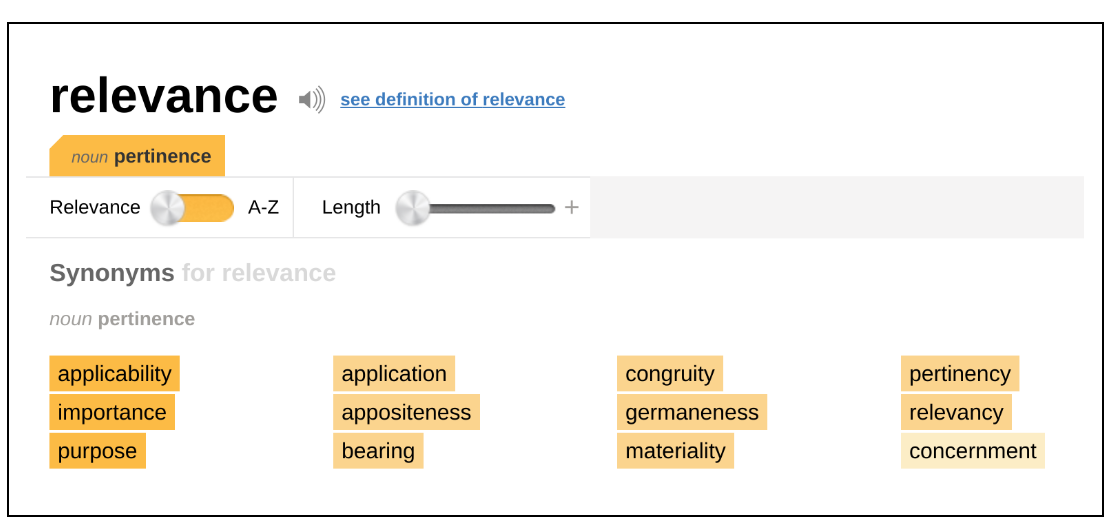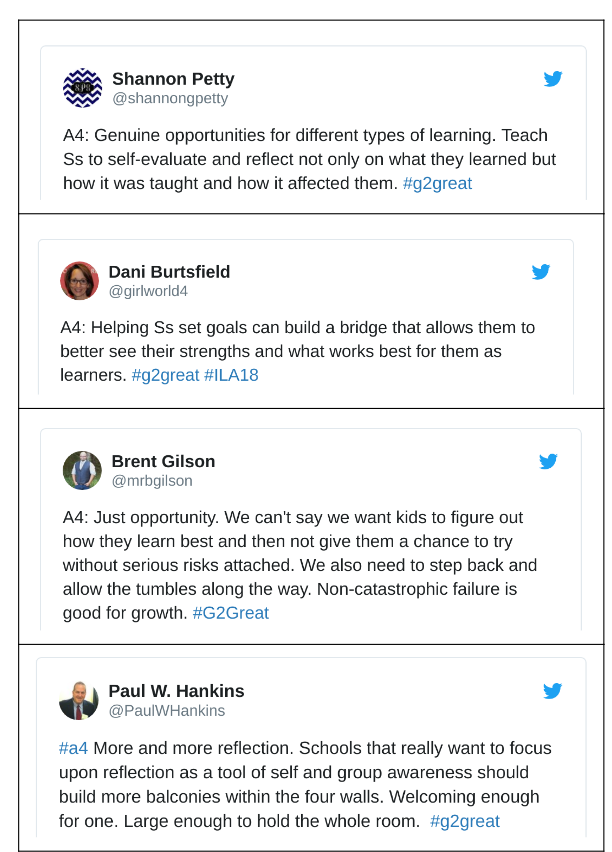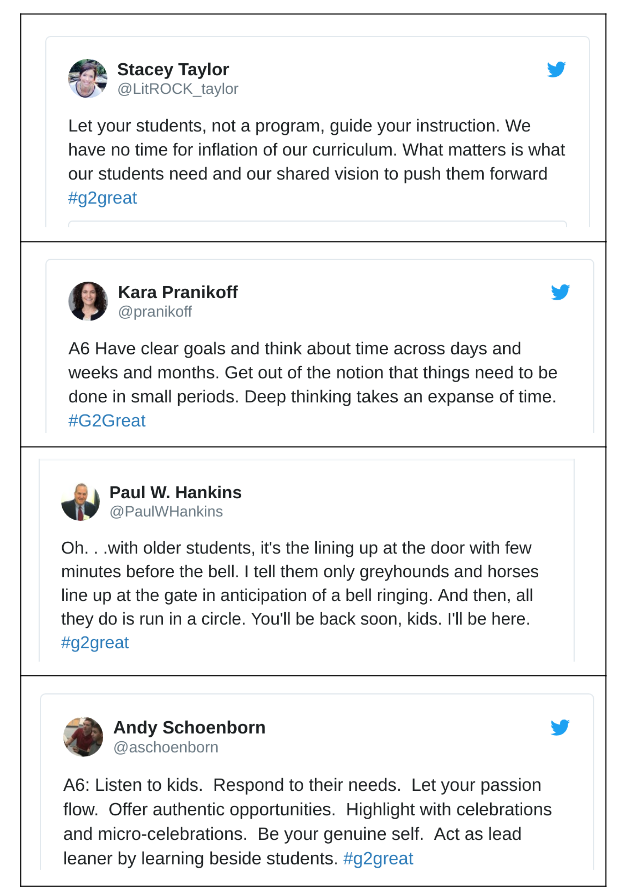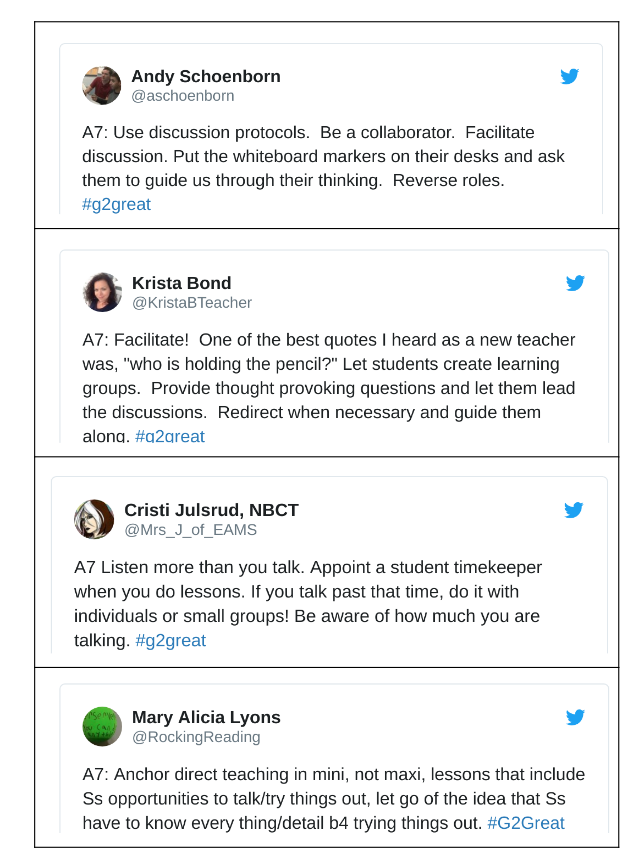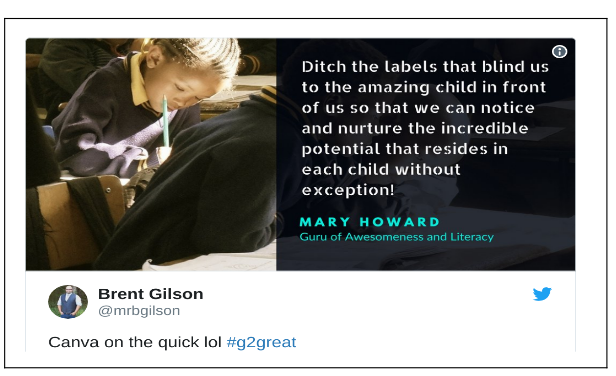The June 7th, 2019 #G2Great chat was the midpoint of five chats scheduled under the title: Rethinking our Intervention Design as a Schoolwide All-Hands on Deck Imperative and and it was momentous as the Twitterverse was filled with wisdom about increasing volume.
Before we can begin, what exactly are we talking about?
What is volume? This question whirred in my brain for the week leading up to the chat as I thought about my answers to the chat questions and this follow up blog post. Some answers: Not the volume on the TV. Not the “speak louder” for volume in fluent reading. Not the first “volume” in the Harry Potter series. Not the volume measurement in liters.
How do you define volume in reading? In search of a definition of volume, I consulted some reading texts, Google Scholar, and some real life literacy scholars. There are several definitions available. Stephanie Harvey and Anne Goudvis define it as “Access + Choice + Time.” Those three elements were present in the pre-chat quotes shown here.
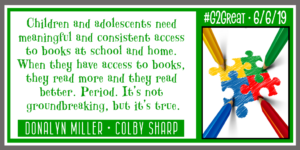
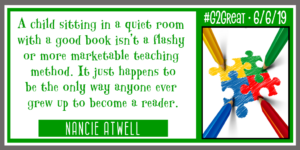
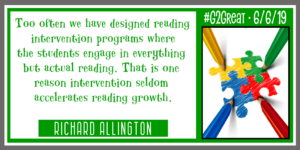
Although literacy gurus agreed that volume was critical to student success in reading and writing, everyone also had just a little different twist that added depth. Allington said it most succinctly when he talked of time spent reading and number of words read.

Others chimed in with “meaningful” and “engaged” reading as well as “across the day” although a commitment to time remained constant. Both Penny Kittle and Kelly Gallagher tell us that if students are not reading AT school then we know they are not reading at home either.
But is Reading Volume more flexible and fluid than JUST time and words?
Yes, there must be a commitment to time but a small part also says access means a lot of texts as well as the engagement factor or rapture of being “lost in a great book” and then the meaningful conversations that come from conferring and dialogue about books.
How do we measure Reading Volume?
In the past many have tried to measure reading volume with book logs and lists of books read. Questions and concerns arose from those practices: Were the books chosen by the students or the teachers? Were the lists accurate? Did the lists include some “fake reading” titles?
Accountability may have won the battle and lost the Volume War as students did the “bare minimum” or perhaps less only in the name of compliance or completed logs. Time is surely one factor.
But does time only count when provided by teachers?
What about the time when students are “sneak reading”? And HOW would time be counted? Minutes? Pages? Books? If we value time spent reading, there is no time to be wasted “counting” words so we could use “The Google” to find out some word counts. (Try googling Harry Potter and number of words just for fun.) As students build up stamina, how could/should those counts increase?
One way to consider the flexibility and fluidity of time is shown in this table from Simple Starts by Kari Yates. The differences between the fall and spring show the expected growth in time and also reflects the increased difficulty of texts throughout the course of the year.
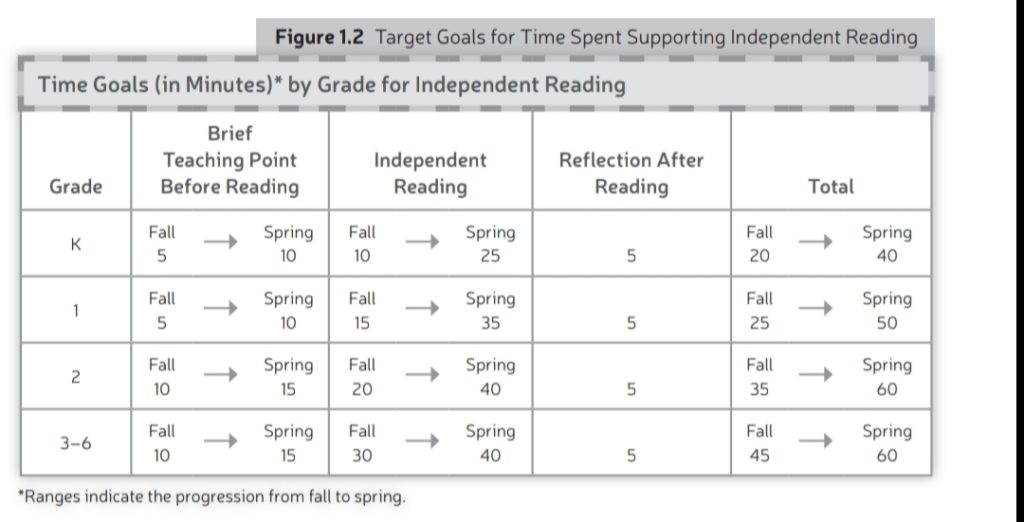
A commitment to access to quality books (chat #2) and quality Tier 1 (chat #1) are a great beginning to improving interventions for striving students. Where do we find Access, Choice and Time that are necessary for reading VOLUME? We will need to continue to say NO to programs that don’t allow students to have access, choice and time to read. We will need to continue to say NO to interventions that don’t allow students to have access, choice and time to read. We will need to say NO to “magic bullets” that don’t allow students to have access, choice and time to read. We will need to say NO to spending money on resources that don’t allow students to have access, choice and time to read.
How can these tweets add to your knowledge bank?
